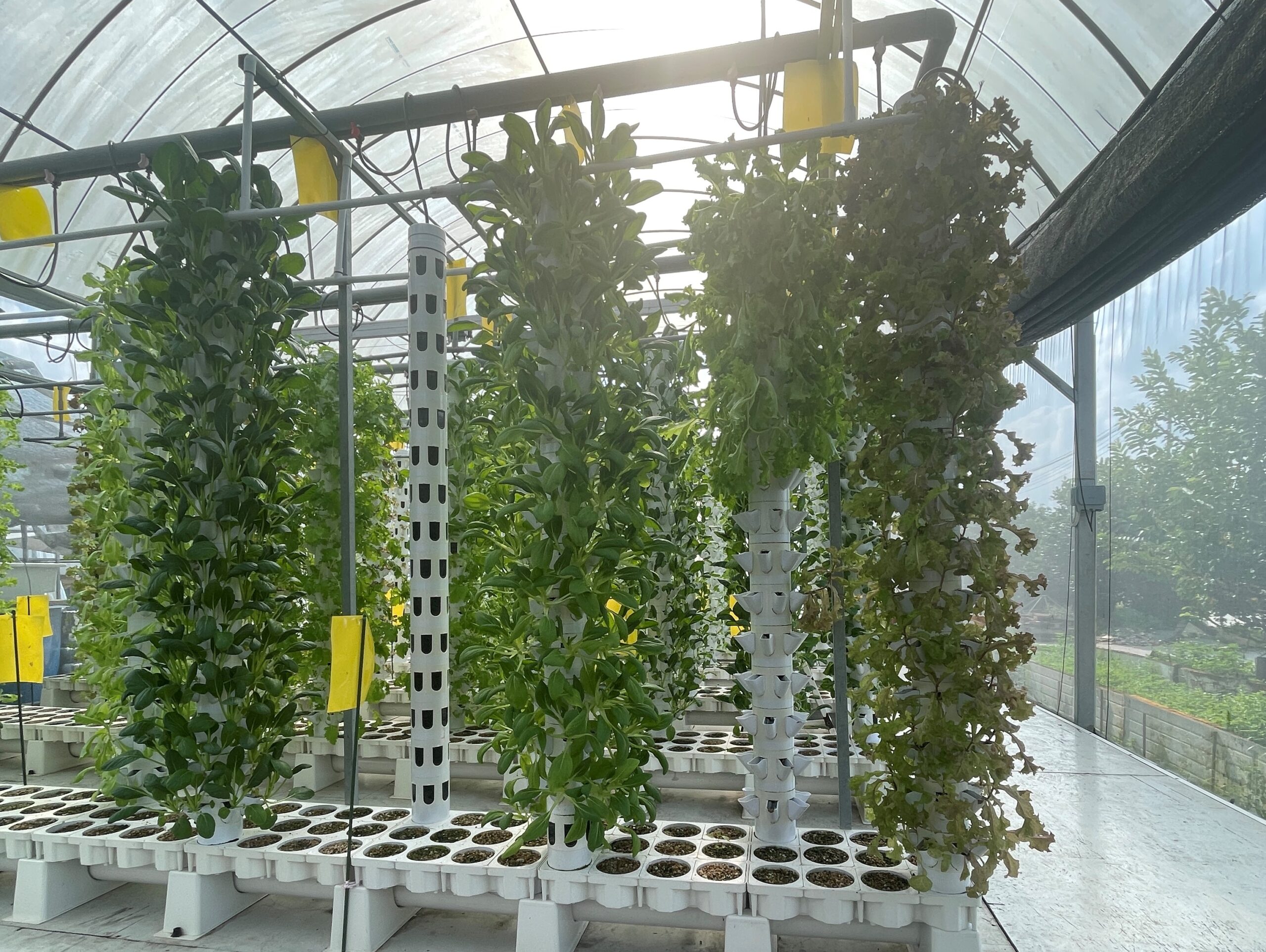Harmonizing Innovation and Sustainability
By: Kai Wang, SEAS ’26

Aquaponics farm in Singapore.
GRIP: Engineering Research in Singapore
This past summer, my journey led me to the captivating city of Singapore, where I embarked on a research internship at the National University of Singapore that seamlessly combined my passion for AI and machine learning with my deep-rooted interest in environmental sustainability. The goal was nothing short of groundbreaking: ensuring sustainable food production in aquaponics systems by maintaining healthy fish populations.
In the realm of aquaponics, a delicate balance exists between aquatic life and plant cultivation. Healthy fish populations are pivotal to this equilibrium, and modern technology has opened up avenues to monitor and optimize their well-being. Machine learning techniques have shown great potential in accurately identifying fish diseases, which, if caught early, can prevent catastrophic consequences. However, this promising technology has hit a roadblock—scarce publicly available datasets of diseased fish images. That’s where my research found its purpose.
My research partners and I delved into the challenge of creating a robust pipeline that could effectively address this data scarcity issue. The solution lay in generating synthetic fish images, augmenting the available image database and enabling machine learning models to be more proficient in disease recognition. The journey began with a meticulously curated dataset of 200 fish disease images, collected through web scraping techniques. This diverse collection formed the foundation upon which the entire project would unfold.
The custom pipeline that my team devised was a multi-stage process, each step thoughtfully designed to maximize the quality and utility of the synthetic images. It started with meticulous image preprocessing, ensuring that the dataset was primed for the subsequent stages. The heart of the pipeline was the synthetic image generation process, where various state-of-the-art generative models were put to the test. After rigorous evaluation, a novel architecture emerged—FIIGNET—an innovative model optimized for synthetic data generation.
With the augmented dataset in hand, the next phase was to train an image classification model. Leveraging the powerful capabilities of the FastAI deep learning model, I embarked on the mission to enhance disease recognition accuracy. The effectiveness of the pipeline was measured by pitting the classification model against a test set composed entirely of real fish disease images.
The results were exciting. The integration of Stable Diffusion (SD) proved to be a game-changer. This technique, particularly effective for grayscale images, propelled the model’s accuracy to an impressive 82%. This was a remarkable leap compared to the baseline model, which relied solely on real images. On the flip side, the traditional Generative Adversarial Network (GAN) models exhibited a lower accuracy rate of around 50% when employed in isolation. However, when combined with an equal ratio of real images, their performance saw a modest uptick to a maximum accuracy of 72%.
This project wasn’t just about the technology—it was a testament to the fusion of innovation, computation, and a genuine commitment to making a positive impact. It showcased the potential of deep learning to revolutionize aquaponics systems, ultimately contributing to the global effort of sustainable food production.
As I reflect on my research internship, I’m reminded of the transformative power of interdisciplinary collaboration. My journey in Singapore wasn’t just about creating synthetic images; it was about contributing to a sustainable future, where cutting-edge technology and environmental consciousness harmoniously coexist. This summer marked a pivotal chapter in my academic and personal growth—one that affirmed my path and ignited a deeper passion for innovation with purpose.
The Global Research and Internship Program (GRIP) provides outstanding undergraduate and graduate students the opportunity to intern or conduct research abroad for 8 to 12 weeks over the summer. Participants gain career-enhancing experience and global exposure that is essential in a global workforce.